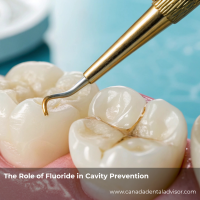Understanding Tartar
Tartar, also known as dental calculus, forms when plaque isn’t fully removed through daily brushing and flossing. Once plaque hardens into tartar, it becomes tightly bound to the enamel and gumline, creating an ideal environment for bacteria.
Tartar:
Appears as yellow or brownish deposits
Forms above and below the gumline
Leads to gum disease and cavities if not treated
Daily brushing and flossing help prevent plaque, but once tartar forms, only a dental professional can remove it using specialized tools.
The Power of Individualized Care Plans
Let’s go back to Sarah. After her tartar issue, her dental team created a personalized care plan that included more frequent cleanings, tailored at-home hygiene advice, and dietary guidance. Within months, her gums were healthier, and she felt more in control of her oral health.
Individualized care plans take into account:
Personal oral health history
Lifestyle factors (e.g., smoking, diet, stress)
Existing medical conditions (e.g., diabetes, pregnancy)
Frequency of tartar buildup
This approach ensures each patient gets the care best suited to their needs—not a one-size-fits-all treatment.
How Individualized Plans Improve Treatment Outcomes
Early Detection & Prevention Personalized plans help detect tartar buildup or gum issues before they become severe. Regular checkups, adjusted to the patient’s needs, allow for timely intervention.
Targeted Treatment For patients with frequent tartar buildup, dentists might recommend deep cleanings (scaling and root planing), prescription toothpaste, or antimicrobial rinses.
Enhanced Oral Health Education By understanding a patient’s habits and risk factors, dental professionals can offer specific advice — like switching to an electric toothbrush or avoiding sugary beverages.
Boosting Patient Compliance
Compliance often falters when care feels impersonal. But when a dentist says, “Based on your tartar buildup, I recommend cleanings every four months,” patients are more likely to follow through.
Ways individualized care improves compliance:
Builds trust through personalized advice
Provides realistic, achievable goals
Fosters ongoing conversations between patient and provider
Sarah, for example, began tracking her oral care habits using a mobile app recommended by her hygienist. She felt supported, not lectured—and it made all the difference.
Fostering Long-Term Oral Health
Long-term health isn’t just about avoiding cavities; it’s about building sustainable habits. Personalized plans:
Adapt as patients age or as health conditions change
Empower patients with knowledge and tools
Encourage preventive care, reducing the need for invasive procedures
Sarah’s story had a happy ending not because she got one tartar cleaning, but because her care plan evolved with her needs.
Tartar Removal Methods
If you already have tartar buildup, here are the most common ways professionals remove it:
Scaling: Manual or ultrasonic tools remove tartar above and below the gumline.
Root Planing: Smooths the tooth roots to prevent bacteria from reattaching.
Polishing: Removes stains and smooths the surface to deter new plaque buildup.
Preventing Tartar at Home
While you can’t remove tartar at home, you can prevent it by:
Brushing twice daily with fluoride toothpaste
Using an electric toothbrush
Flossing daily
Using a tartar control mouthwash
Eating a balanced, low-sugar diet
Conclusion
Tartar might start small, but left unchecked, it can lead to major oral health problems. Fortunately, individualized dental care plans offer a powerful solution. They provide a roadmap tailored to each patient’s needs, improving outcomes, boosting compliance, and ensuring healthier smiles for years to come.
If you haven’t had a personalized dental plan discussed with your provider, ask about one during your next visit. Like Sarah, you might find that small changes can lead to a big difference in your oral health journey.
FAQ: Tartar and Individualized Dental Care
Can I remove tartar at home? No. Tartar is hardened plaque and requires professional dental tools for removal.
How often should I visit the dentist to avoid tartar? Most people benefit from biannual visits, but those with frequent tartar buildup may need cleanings every 3–4 months.
Is tartar harmful to my health? Yes. It can lead to gum disease, cavities, and even impact heart health if left untreated.
What causes tartar to form so quickly in some people? Factors like genetics, diet, oral hygiene habits, and saliva composition can influence tartar buildup.
Are electric toothbrushes better for tartar prevention? Yes. They clean more effectively, especially along the gumline, reducing plaque before it hardens.
What is an individualized dental care plan? It’s a customized approach to dental care based on your specific oral health, habits, and medical history.
Can children benefit from personalized dental care? Absolutely! Tailored plans help instill good habits early and manage risks unique to kids, like early tooth decay.
Does insurance cover personalized care plans? While insurance typically covers standard care, more frequent visits or special treatments may require additional coverage.
Is tartar removal painful? Most patients experience little discomfort, though deep cleanings may require local anesthesia.
How soon will I see results after tartar removal? Improvements in gum health and appearance are often noticeable within days to weeks, especially with consistent home care.










Leave a Reply